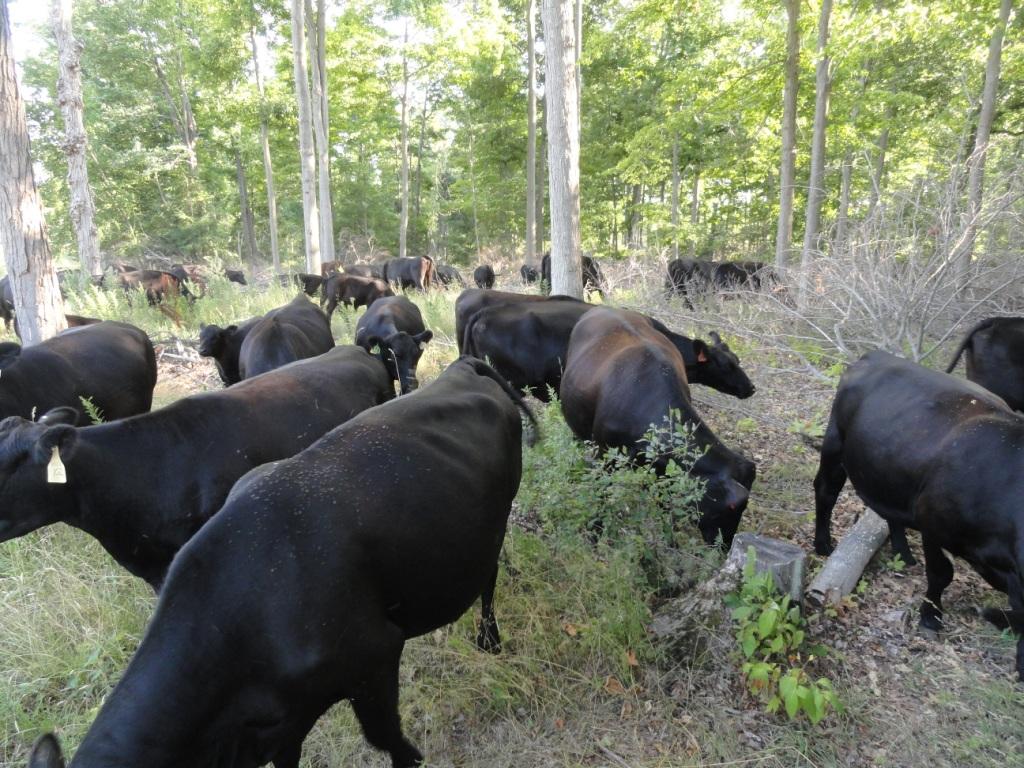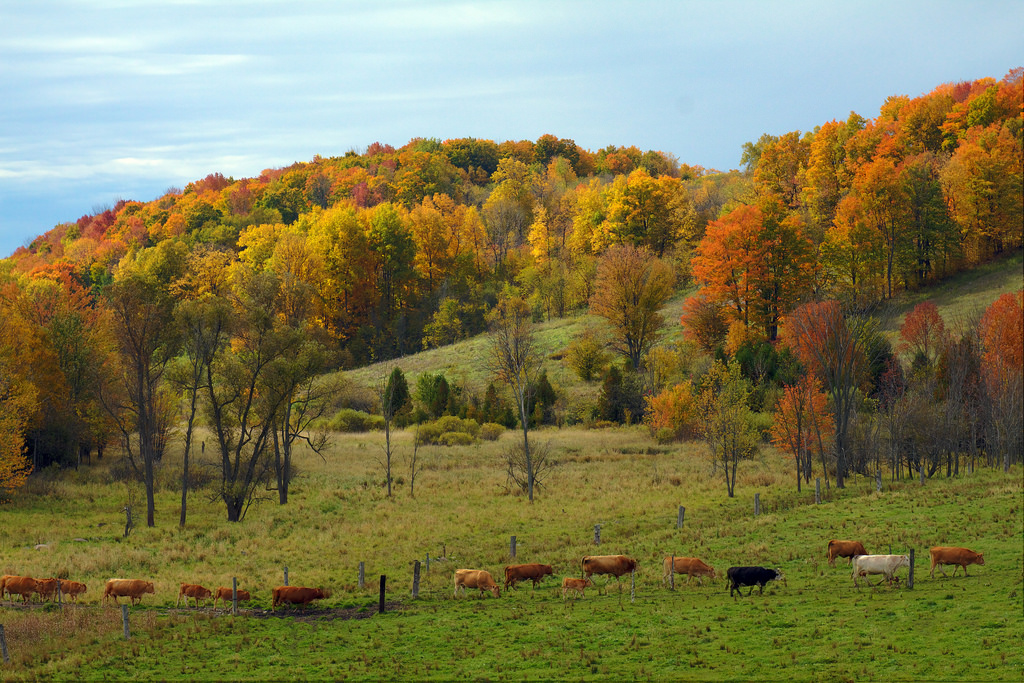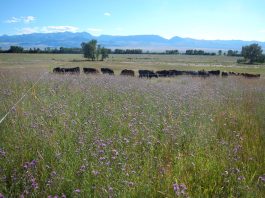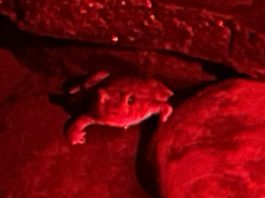
Throughout most humid regions of the US, the landscape is dotted with old farm fields and pastures that today grow trees and shrubs. In some cases, there are obvious reasons why land was left to revert back to its natural state – too wet, stony or steep. But many of these old field sites also grew back because the farmer no longer had the means or needs to keep the land open. Regardless of the underlying reasons, many of these what now appear to be woodlots (or brushlots, if that’s the image that comes to mind) present ripe opportunity for productive and profitable grazing system expansion – especially when adjacent to existing pasture land, or available in large enough blocks to support a viable grazing operation.
There are many variables to consider when evaluating the potential of bringing idle land back into production for grazing. For starters, the land must be accessible and “fenceable”, have a developable source of water, and be potentially productive enough to offset the necessary investments. If you can’t check “yes” to these questions and there isn’t a reasonable fix, then look elsewhere for the time being. The next step is to come up with a (simple) plan for what will be done, who will do it, and when. Making sure there’s a good “why” is also a recommended part of this planning. In other words, will it pencil out and contribute to your objectives?
The following are some of the important considerations for reclaiming former farmland:
Are there trees and shrubs worth leaving?

If so, then developing into a silvopasture (openly-wooded) pasture may be the best option because quality trees can be cultivated as a future cash crop while at the same time provide shade, browse, watershed protection and many other benefits. And if grazing is the objective, why spend money clearing trees today that will yield profits tomorrow?
How many trees should be left?
Silvopastures, like many things in life, are all about balance. From a forestry perspective, favor trees of good value, vigor and quality that will continue to significantly appreciate in value. Trees that are of firewood quality today – and will only probably become larger firewood trees in the future would be good candidates for culling, unless there is some other justification for leaving them. Some examples would be unusual species, or trees with special wildlife value like a nesting cavity or den. Silvopastures vs. woodlots can be thought of as a choice between growing the best trees on a given location together with either forage (in the case of silvopastures) or firewood (in the case of woodlots). For silvopastures, the firewood-quality trees are removed to reapportion sunlight to the ground level to grow quality forage plants. Getting enough sunlight on the ground is a critical step in silvopasture development, so avoid leaving too many “good trees”. Consulting foresters can provide invaluable expertise when contemplating an extensive woodlot thinning.
What about all that other green stuff?
Trees intercept some of the precious sunlight needed to grow forages in the silvopasture understory – but so do all of the other plants and shrubs already growing there. Some of these plants and shrubs may be quality food sources or enhance the silvopasture in other ways. Others, however, may detract from the silvopasture because they are unpalatable, potentially harmful, or too aggressive in their growth habit such as the so-called “forest invasive plants” like multiflora rose (although there are also many native plants that can be problematic like some species of ferns). The “low shade” from the shrub & herbaceous layer is often more of an impediment to growing quality forages than the “high shade” of the main canopy trees. And unlike the culled trees that can often be utilized for things like firewood or sawtimber, these smaller plants are usually costly to control. Mechanical, chemical and organic methods such as burning, shading (solarization) and livestock impacts (trampling, girdling, defoliating and rooting) are all options to consider for removing the lower interfering vegetation. Usually, a combination of these methods will give the best results.
Heavy livestock can be baited into persistent patches of undesirable brush to damage and weaken the targeted plants over time, as well as to stimulate the growth of forage plants in the decomposed waste hay. In the examples below, a round bale was fed in a clump of multiflora rose, leaving the canes heavily damaged afterwards. Mineral feeders and supplement tubs can also work to lure animals into brushy and weedy areas.


So, I got enough sunlight on the ground – now what?
Daylighting the ground is the starting, not the ending point towards establishing quality silvopastures. The next two steps are to create favorable conditions for desirable plants to germinate, and then manage in a way that promotes their growth – while discouraging the growth of the undesirables. Germination requires a seed source and good seed-soil contact. Wooded areas surrounded by fields and pastures – or where there is still a remnant of forage plants – usually have a sufficient seed bank to spare the expense of supplemental seeding. Once a variety of herbaceous and woody plants start to grow in the increased sunlight levels, skilled management will be necessary to shift the composition to primarily desirable species. When open pastures become too weedy, they can be mowed, sprayed or even reseeded. Silvopastures, on the other hand, have lots of obstacles in the way that limit these options – so intensively-managed livestock impact is about the only practical tool to manage vegetation. Desirable impact with livestock can be achieved in different ways. Some examples are: rooting by pigs; bark girdling and defoliation with small ruminants, or trampling and crushing with heavy livestock that are grazed at very high densities or which are baited into brushy areas during winter feeding. Each of these has its pros and cons, but managed correctly could be an effective way to increasingly improve understory vegetation composition – without unduly compromising animal performance, welfare, tree health and other resources.

There’s a learning curve involved with developing idle land into successful silvopasture systems, so start small and experiment when possible. Resources and advice from fellow practitioners is available at Cornell’s silvopasture forum: www.silvopasture.ning.com
Brett Chedzoy is a regional extension forester for Cornell Cooperative Extension of Schuyler County, and in his spare time manages his family’s 450-acre grazing operation, Angus Glen Farms, LLC in Watkins Glen, NY.
 Thanks to the National Grazing Lands Coalition for making this article possible. Click on over to see the great work they do for all of us. Thank them for supporting On Pasture by liking their facebook page.
Thanks to the National Grazing Lands Coalition for making this article possible. Click on over to see the great work they do for all of us. Thank them for supporting On Pasture by liking their facebook page.



